Beyond the Fabric: Teaching the World about the Kimono and Japan’s Traditional Dress Experienc

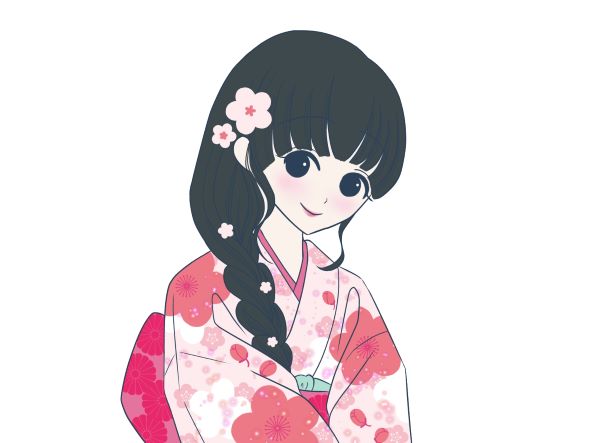
julio
The kimono is a traditional Japanese costume that has been handed down from ancient times.
The kimono can be said to be a folk costume of rare elegance from a global perspective.
However, surprisingly, there are many things we do not know about the detailed protocol of kimono.
It is fun to wear kimono freely as a modern fashion, but as a Japanese, you should have a basic knowledge of kimono.
In this issue, we will focus on kimono and provide you with basic knowledge of kimono that you will not have to worry about when asked by foreigners!
Basic Knowledge of Kimono
The History of the Beginning of Kimono
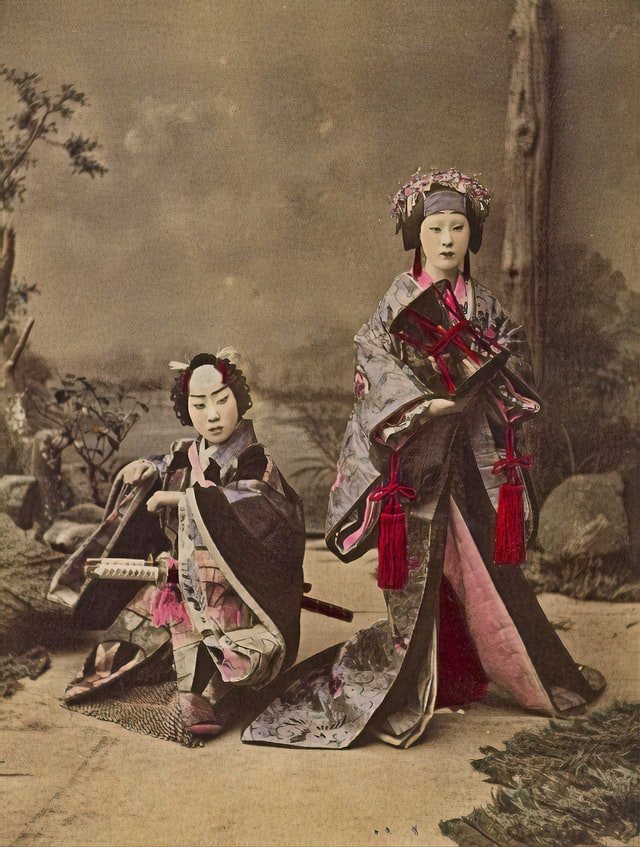
When we think about the history of the kimono, its origin is still considered to be the Yayoi period.
Of course, since it is organic material such as plant fibers, it is difficult to remain and details have yet to be discovered.
According to what is now known from documents that were imported to mainland China, men wore a type of clothing called makibu-robe, in which cloth was wrapped around the body, and women wore a headdress called kantou-robe, instead of the current form of kimono.
The earliest known Japanese costumes are those of haniwa (clay figurines) found in the tombs of the powerful families of the Kofun period.
The paintings can be identified as wall paintings of women’s group images from the Takamatsuzuka burial mound, which is said to have been made between the early 7th and 8th centuries.
Later, during the Kofun period, the clothing changed to a trouser-like item for men and a skirt and jacket type for women.
In the Asuka period, along with the development of status and rapid civilization, clothing also evolved and spread rapidly.
The common people wore kosode, a kantou gown with tubular sleeves, while the clothing of the ruling class evolved into a form with unstitched cuffs called oosode.
These large sleeves, piled one on top of the other, are the symbolic and extravagant garments of the ruling class, represented by the juni-hitoe.
Later, during the Kamakura-Muromachi period (1333-1568), these garments came to be referred to as “kimonos.
The reason behind this is to distinguish between kosode with a collar and conventional kosode without a collar, which is called a kimono.
Everyone except the ruling class, such as court nobles, began to wear kosode with collars, and this perception has continued to the present day.
The Edo Period and Kimono Culture
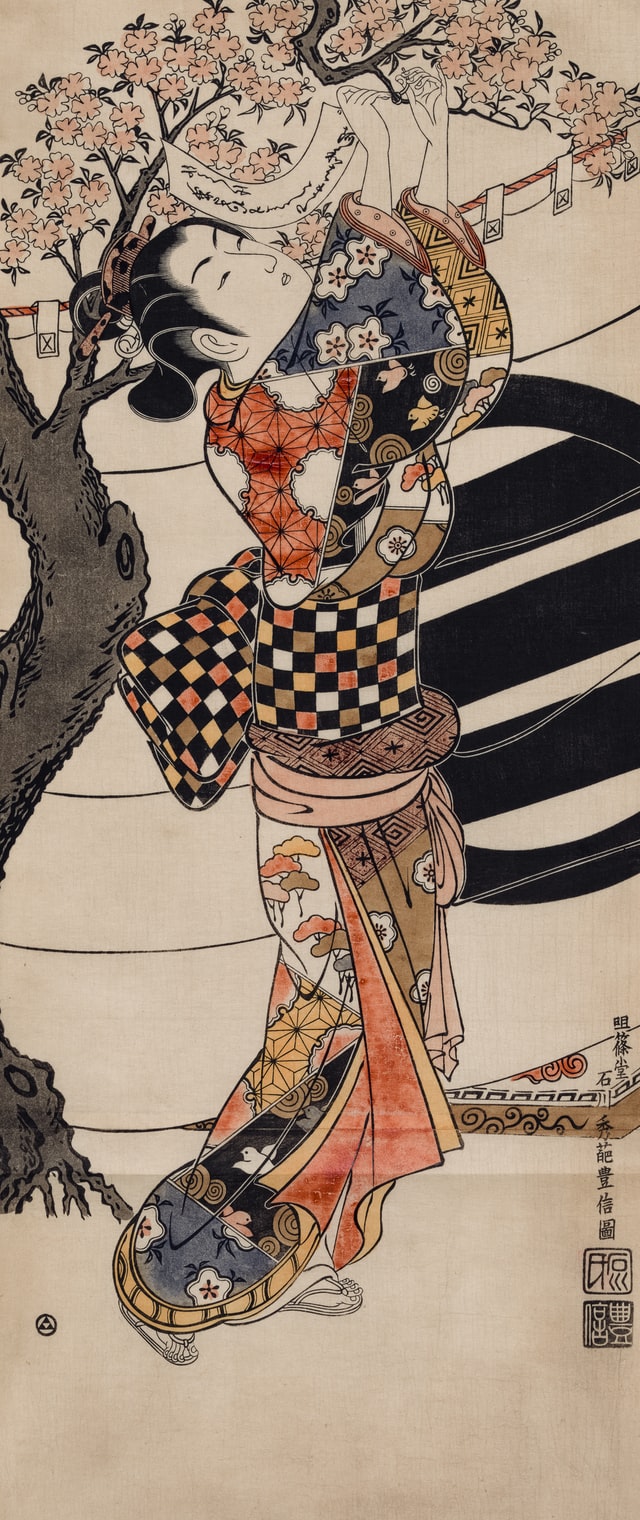
The Edo period marked the maturation of Japanese culture.
Of course, kimono culture is also reaching maturity.
In the Edo period, detailed restrictions were set on kimono materials and even colors, depending on one’s status.
The samurai families were in power, and expensive silk and other clothing and lustrous colors were the preserve of the privileged classes.
In contrast to the kimonos unique to samurai women, which were lavishly decorated with luxurious goods and richly embroidered with gold and silver, the common people wore simple materials such as linen and cotton.
In the mid-Edo period, the culture of the townspeople bloomed, and a focus on nature, including flowers, birds, and landscapes, became popular.
The yuzen dyeing of today was born around this time.
Popular painters such as Korin Ogata also appeared, and the kimono of the townspeople became more colorful.
At the end of the mid to late period, the axis of fashion was the Kabuki actor.
How to tie an obi and how to wear it.
The people of Edo (present-day Tokyo) followed the example of popular Kabuki actors in terms of color combinations and other aspects of their appearances.
From this time on, the emphasis was placed on appearance rather than functional beauty, and the haori and obi knotting styles that are common to today’s kimonos were born.
However, as the reforms of the Tempo period brought a stricter crackdown on luxury goods, attention was drawn to the dress of the lower middle class and common people.
People began to enjoy dressing up in modest kimonos with plain colors, striped patterns, and small patterns, and to enjoy fashion in a restricted environment by using small accessories and lining hem, and a uniquely Japanese sense of beauty was born again.
By layering clothes, color schemes and patterns can be combined in a fun way, allowing a good sense of style to shine through the simplicity of the garment.
This historical and cultural background has led to a unique aesthetic sense of Japanese people’s playfulness toward clothing that is unparalleled in the world, which has led to the current aesthetic sense of kimono since the Yayoi period.
Types of Kimono
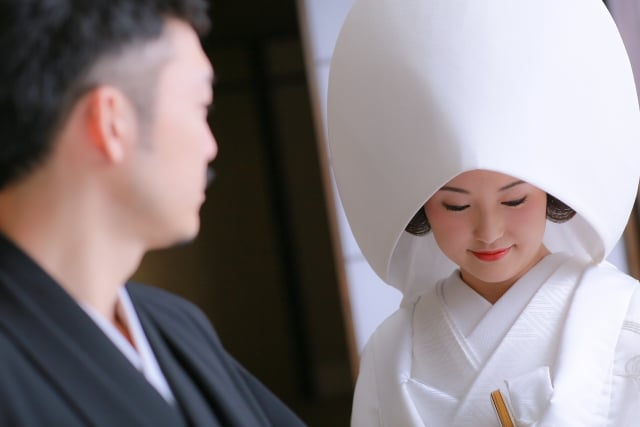
How many types of kimono are there?
For kimonos worn on formal occasions,
Shiro-Muku, Shiro-Uchikake, Kuro-Tomesode, Shiro-Tomesode, Furisode, Visiting Kimono, Tsukebake, Shikimusoku, Mourning Clothes,
As a casual kimono,
Edo komon, komon, tsukeboshi komon, tsumugi, cotton, yukata
are listed below.
However, this kimono is of this rating only in terms of the type of kimono.
It is not possible to say.
The grade of the kimono changes depending on the coordination, the number of crests, and the obi.
For example, the crest, which represents the family crest on the chest and back of a kimono.
The number of crests varies from one, three, or five, depending on whether the dress is worn as everyday wear or formal attire.
Even a komon kimono, which is often used for casual occasions, can be transformed from everyday wear to formal attire by adding a luxurious obi that harmonizes with it.
Thus, it can be said that the kimono is a fun garment that allows the wearer to play with his or her sense of style and knowledge to the maximum extent.
TPO related to Kimono
Class of Kimono
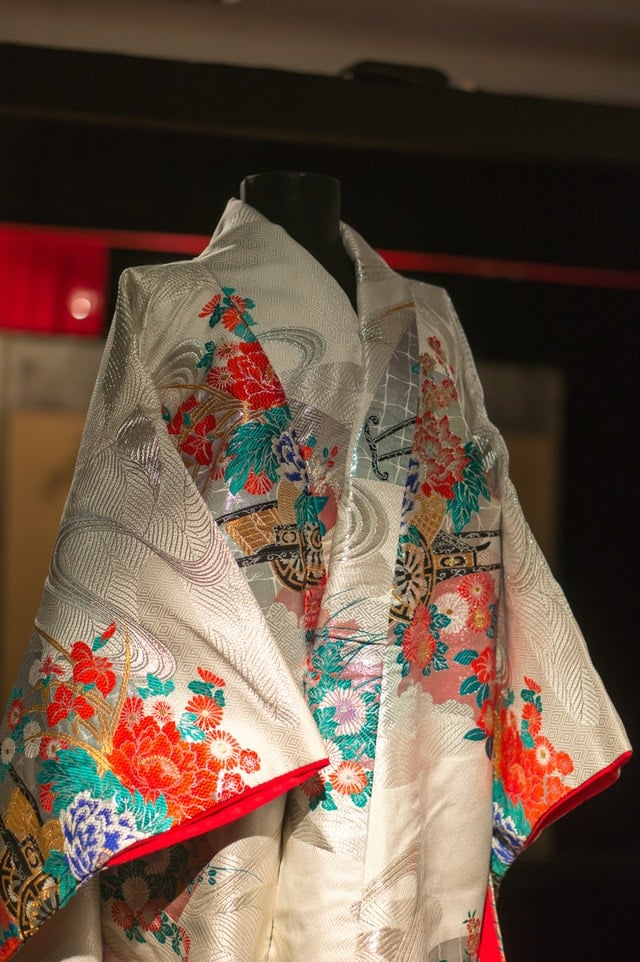
Kimonos are classified into four categories: formal wear, semi-formal wear, formal wear, and everyday wear.
This is very important, and if you do not dress according to TPO, you will look very out of place.
First, we will introduce four types of ratings.
Let’s look at them in order.
[Ritual attire].
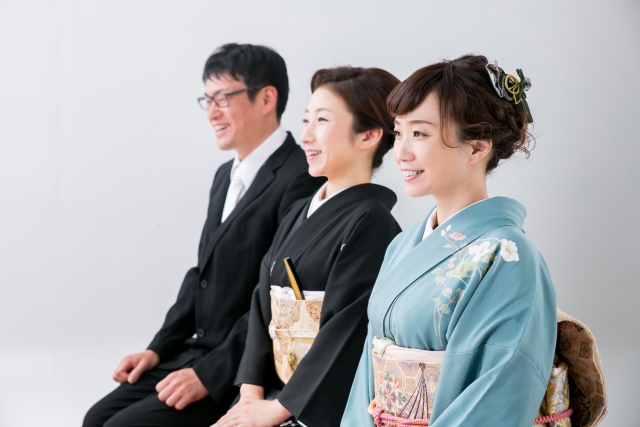
This is the most prestigious type of kimono.
Formal formal wear includes black and colored tomesode, furisode (long-sleeved kimono), and mourning attire worn when attending weddings, funerals, and other celebrations and events of congratulation or mourning.
Kuro-tomesode is the most prestigious of all kimonos, followed by shiro-tomesode.
Kuro-tomesode can be worn by married women, and shiro-tomesode by both unmarried and married women.
The first formal attire for unmarried women is furisode, which is worn on the stage of a coming-of-age ceremony, wedding, or graduation ceremony.
Mourning clothes worn for a funeral or farewell ceremony are plain black with five family crests without fail, white tabi (socks) and lintel, and black for everything else.
And the wedding uchikake is the formal wedding attire that only the bride can wear.
[semi-formal attire].
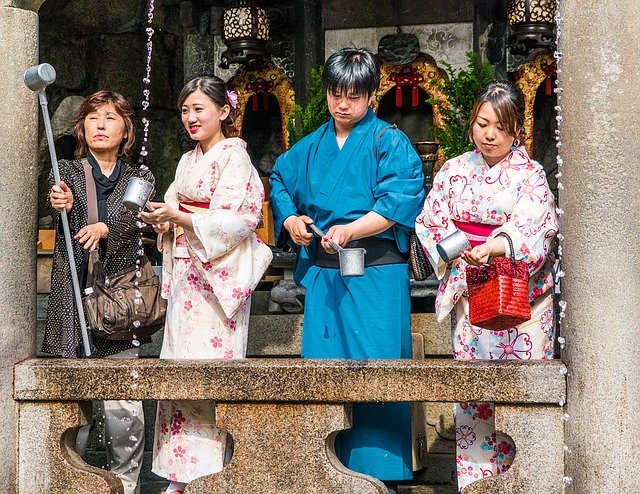
This is a short-form formal wear.
It is the second most prestigious type of kimono, and is worn as formal attire for formal occasions.
Visiting gowns, tsukebake, and colored kimono with crests are also considered semi-formal attire.
Visiting kimono and kimono without colors are available.
Visiting kimono can be worn as semi-formal attire by both unmarried and married couples.
It can be worn to a wedding reception, a party, or as a mother’s attire for a children’s event.
Shikomuki is a kimono dyed in one color other than black.
No pattern.
The prestige changes depending on whether it has a crest or not. If not, it can be worn on outings or for lessons.
[grandstanding]
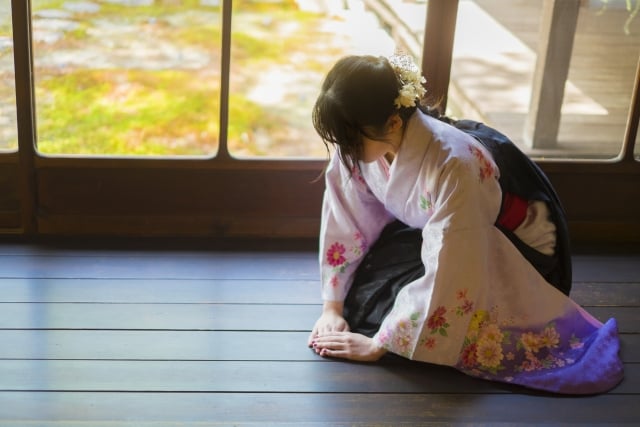
It is a formal attire to be worn not for weddings and funerals, but for parties and other glamorous occasions.
The visiting kimono without crests, which is now considered the mainstream kimono, also falls into this category.
The combination of a kimono with a gorgeous pattern and an obi also makes it a grand costume, and this ability to change the character of the kimono by combination is also a characteristic of the kimono.
[Normal wear.]
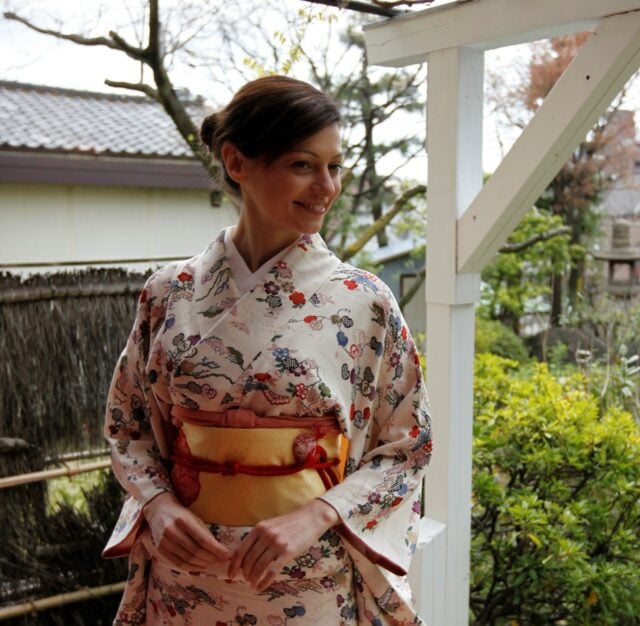
Kimonos worn for casual outings and lessons are called “everyday wear.
Komon and omoshi sleeves are classified here.
Please note that it is not appropriate for TPO and is against manners to wear in formal places.
Kimonos arranged in the modern style also fall into this category, and are enjoyed as everyday kimonos, rather than worn to public parties as in the formal kimono style.
An Important Seasonal Sense
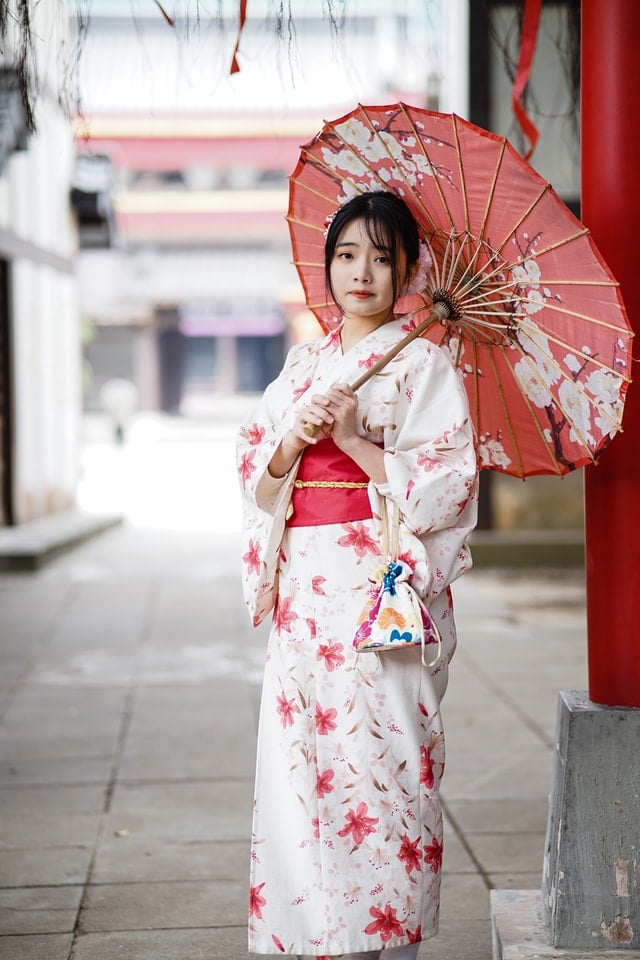
And the season, which is important for kimono.
The sense of the season is expressed not only through materials, but also through patterns and accessories.
Floral patterns require special attention, and it is considered undignified to wear them when those flowers are in full bloom.
For example, for plum blossoms, the pattern is from mid-December to early March, and for cherry blossoms, from late February to early April.
However, it is worn when the flower is in full bloom, or one step before.
The old Japanese spirit of sophistication, that it is uncouth to bloom with flowers, remains strongly as a vestige of the Japanese people.
Therefore, kimono with flower patterns can only be worn in sleeves a few times during the year.
It looks very Japanese and will be appreciated, but when choosing a kimono as a souvenir for a foreigner, be careful of the floral patterns.
When presenting kimonos with patterns such as cherry blossoms or maple leaves, there are only a few times they can be worn, and if the foreigner were to wear them in an official setting, it would be uncouth if he or she were to wear them in any season.
And as for kimono materials, there are seasons.
The time for students to change out of their school uniforms also continues to be a remnant of the kimono changeover.
October through May are versatile.
A kimono that has been lined and lined and lined and lined.
June and September are for kimonos called monogi, while summer months of July and August are for light kimonos.
This year it is still early June, but summer is early and it is still hot and humid, so I want to wear light clothes, or it is already somewhat cold this year even in September.
Keep the tradition alive even on days such as
It is important to note that it would be impolite not to observe the calendar and seasons, especially if the kimono is worn on a formal occasion.
It is important to match not only the kimono but also the obi, obiage, obijime, and other accessories with the kimono.
There are summer and winter obis as well, so they are selected according to the season.
Since small articles are considered to be made ahead of time, a summer obi is worn in June and a winter obi in September to indicate the season.
Kimonos have many detailed rules, but you can color them as beautifully as you like, depending on your own sense of style, once you have the important things down.
Q&A on Kimono Asked by Foreigners
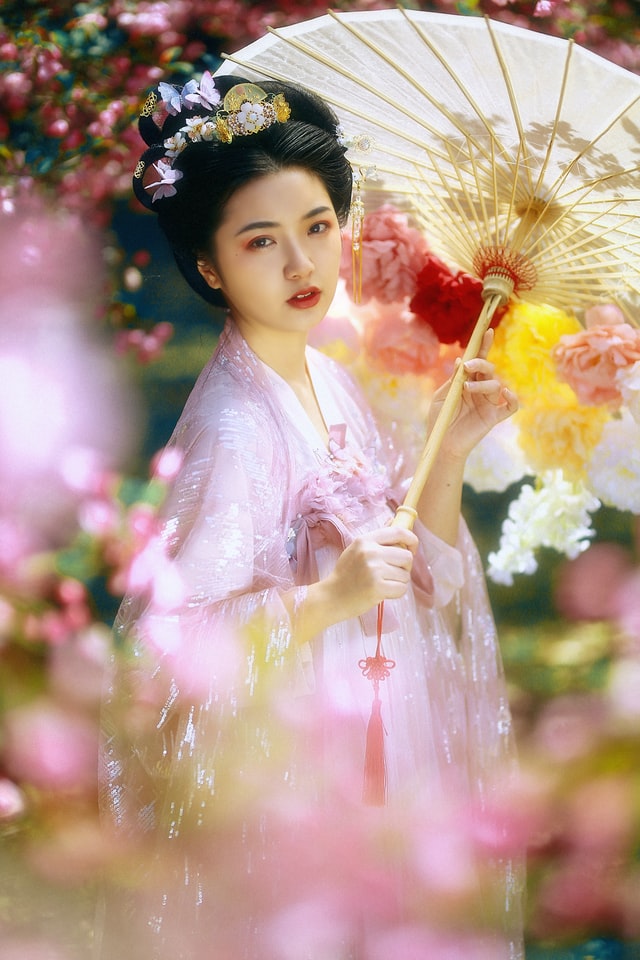
We have compiled a list of questions frequently asked by foreigners about kimono.
What is the difference between a kimono and a yukata?
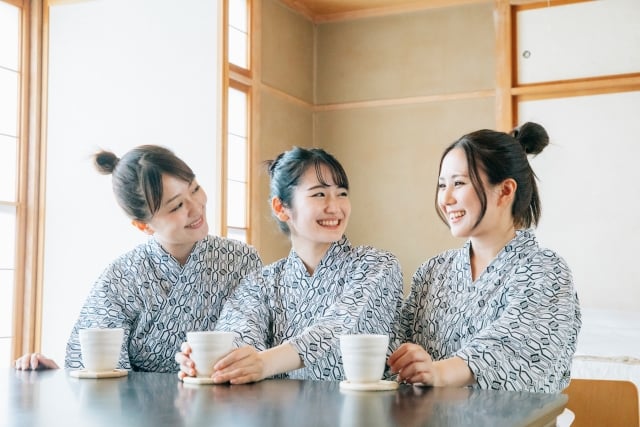
It is often seen that foreigners do not understand the difference between a kimono and a yukata.
The biggest difference between a yukata and a kimono is that a yukata is one type of kimono.
And yukata are summer-only and cannot be worn for formal occasions, no matter how glamorous and fine they are.
In most cases, yukata are enjoyed as everyday wear at summer events such as fireworks displays and summer festivals.
You cannot wear a yukata to a wedding or party, even if it is in the summer.
The material is mostly cotton and thin summer wear.
Another type is the yukata, which can be rented at onsen and ryokan (Japanese-style inns) and is worn in place of nightgown or underwear.
Yukata are made of cotton, linen, or, more recently, polyester, and are popular for their ease of care, which is unique to everyday wear.
Because they are not as formal as kimonos, yukata can be worn with sandals or remade to look like a dress.
Do Japanese people still wear kimonos today?
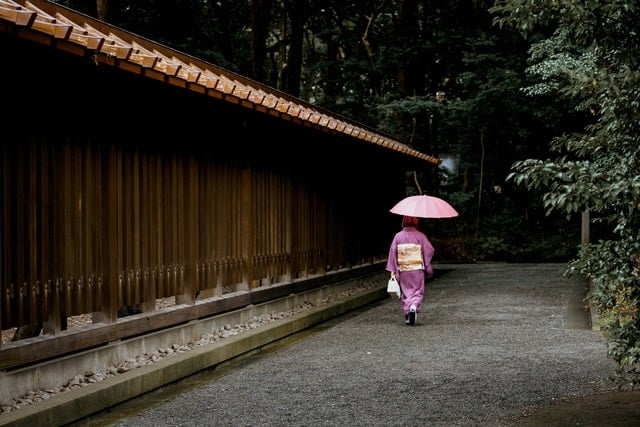
Sometimes foreigners who are unfamiliar with Japan ask me, “Do Japanese people still wear kimonos as their daily wear in Japan? I am sometimes asked by foreigners who do not know much about Japan, “Do Japanese people still wear kimonos as everyday clothes?
Of course, some people wear kimonos as everyday wear, but the number of people who wear kimonos on a daily basis is thought to be much smaller than it was around the 1970s.
However, it is still worn today at special parties, weddings, funerals, and other traditional cultural events as an indispensable part of the Japanese costume.
Is there a difference between a KIMONO and a KIMONO for Budo?
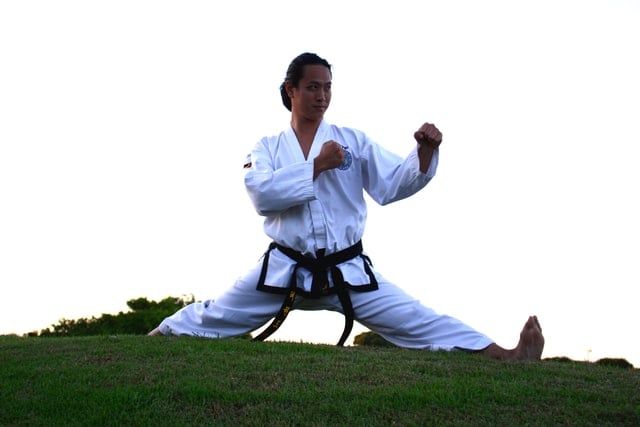
The popularity of traditional Japanese martial arts is constantly expanding overseas.
In most countries, when practicing Japanese martial arts such as karate, judo, kendo, and kyudo, people wear a kimono, just as they do in Japan.
Since this dohimo is pronounced “kimono” as it is, a surprisingly large number of people think of kimono = dohimo.
The dogi is a sporting ritual worn when performing the Japanese martial arts, which has been recommended since ancient times and is used to this day.
In particular, it was during the Meiji period (1868-1912) that the current form of dojos was created.
It was a time when various fields were civilized.
Today, there is a wide variety of materials and structures that have been developed to suit different types of martial arts.
So they are impressed when I tell them that KIMONO as street clothes and KIMONO as clothing have different meanings.
Previous articles about martial arts can be found here.
Basic Knowledge of Karate] Explained in English in a way that is easy for foreigners to understand.
Karate Experience for Foreigners! Self-defense, learning Mawashi Kick and event examples
Four examples of uniquely Japanese performances by karate and martial arts
Team building through martial arts for foreigners
Do I always wear a kimono when I do the tea ceremony?
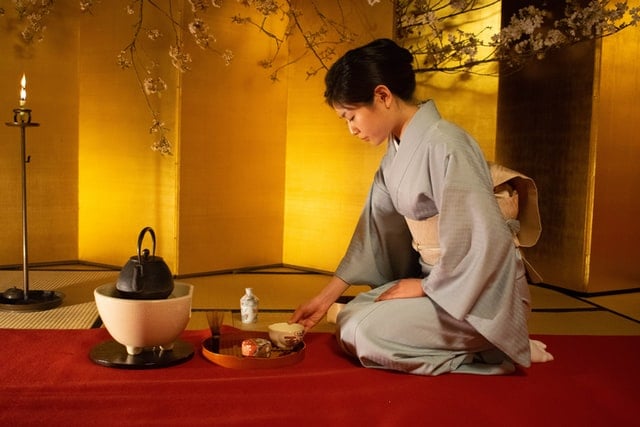
Photos of people practicing the tea ceremony always show Japanese people wearing kimonos.
Although you are not necessarily required to wear a kimono in tea ceremony practice, you should at least have socks, as bare feet and stockings are forbidden, even in the summer.
Some people wear kimonos to practice because it is often easier to understand some of the steps of odenmei if you are wearing a kimono.
Please inform them that foreigners are not required to wear kimonos when having tea in a Japanese tearoom, and that they can also enjoy tea in western clothes.
Of course, the tea ceremony experience wearing a kimono is currently a popular Japanese cultural experience among foreign visitors to Japan.
Since this is an opportunity, we would like to encourage foreign visitors to try kimonos as well, if they have the time to enjoy the art of oden.
Here are some past articles on recommended tea ceremony experiences.
For reference!
Practice by an expatriate] Omotenashi with tea ceremony and kimono:
How do you wear a kimono?
It is quite common for foreigners to ask me questions about how to put on a kimono.
It is quite difficult for Japanese people who are not accustomed to wearing kimonos in everyday life.
To wear a kimono, one puts on underwear, undergarments, lintel, collar, hem, hem, ohaboshi, obi knot, and obi drum.
1 Wear underwear to compensate.
2 Put on long underwear.
3 Wear Kimono.
4 Tighten the obi.
In the case of yukata, long underwear is not worn and should be removed from the order.
At first glance, this may seem difficult, but if you keep in mind the sequence of events, you will be able to dress your child in a kimono, even if it is not perfect.
Can foreigners wear kimono?
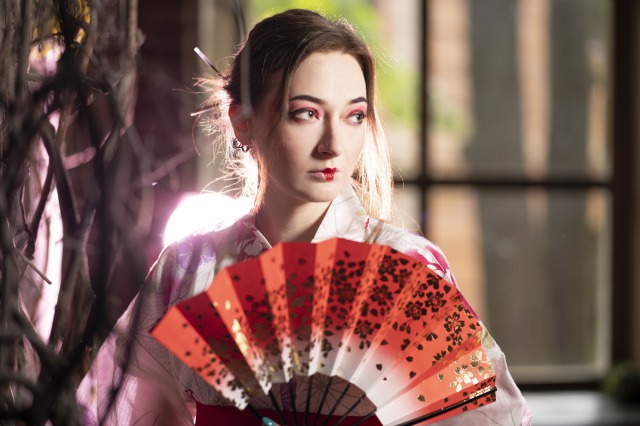
A question that is asked unexpectedly.
Can a foreigner wear a kimono? This is the question.
That is true, isn’t it? But from a foreigner’s point of view, the kimono is an important part of the Japanese national costume.
If the kimono is a Japanese religious and ethnic item, why can’t foreigners wear it? Sometimes there are those who think that they are not allowed to wear kimonos.
In some countries and cultures, clothing and religious beliefs are deeply intertwined.
Kimono is a traditional costume for Japanese people, but foreigners can also wear it.
It has become very easy to enjoy kimonos in Japan, from the popular kimono experience services to maiko experiences, etc., among travelers to Japan.
You see foreign tourists walking around town after experiencing the kimono experience.
And as for the kimono experience, even wealthy customers are very satisfied with the kimono dressing experience because of its dignity.
The experience of wearing a luxurious kimono of the Edo period, such as the O-oku style or a courtesan, or a high-quality, prestigious and beautiful kimono, will be a very rare experience for even the most discerning visitors.
It is also very much appreciated to offer such a service as a surprise.
Previous articles about the kimono experience can be found here!
Transform yourself into a lady of the inner palace! Kimono experience to entertain wealthy foreigners
Japanese Dance and Dressing Experience for Foreigners
summary
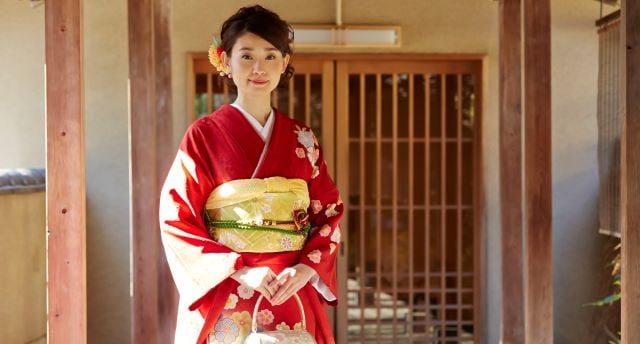
Even from a foreigner’s point of view, Japanese people wearing kimonos are said to look exotic, elegant, and dignified.
If you have the kimono knowledge to answer questions from foreigners, you will be able to broaden your conversation.
If you see a Japanese person wearing a kimono or dressing in style in your daily life, you will feel happy that day.
Even from outside of Japan, the stylishness of the kimono makes people happy.

日本独自のおもてなし文化を世界中の人へ広めるために日夜努力しています。外国人の方の接待やおもてなしのご相談はお気軽にご連絡ください。お問い合わせはこちら
